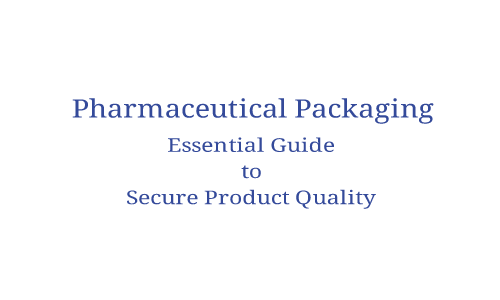Advanced Materials And Technologies in Pharmaceutical Packaging
Advanced materials and technologies play a crucial role in the field of pharmaceutical packaging. These innovative solutions enhance the safety, security, and efficiency of medication delivery, ensuring optimal patient care.
Smart And Intelligent Packaging
Integration of sensors and electronic devices in packaging to monitor various factors like temperature, moisture, and light exposure.
RFID (Radio Frequency Identification) tags can be used to track and trace pharmaceutical products throughout the supply chain.
Smart packaging can provide information about dosage instructions, expiration dates, and potential drug interactions, enhancing patient safety and compliance.
Active And Modified Atmosphere Packaging
Active packaging systems help extend the shelf life of pharmaceutical products by controlling gas composition inside the packaging.
Modified atmosphere packaging involves altering the gas composition to create an environment that slows down degradation and preserves drug stability.
Oxygen absorbers or scavengers can be incorporated into packaging materials to reduce oxygen levels and prevent oxidation of drugs.
Biodegradable And Eco-Friendly Packaging Materials
The use of biodegradable polymers derived from renewable sources reduces the environmental impact of pharmaceutical packaging.
Bioplastics, such as polylactic acid (PLA) and polyhydroxyalkanoates (PHA), offer comparable functionality to traditional plastics but with reduced carbon footprint.
Eco-friendly packaging materials can be composted or biodegraded, minimizing waste and pollution.
Easy Opening And Convenience Features
Packaging that is easy to open and use can significantly improve the user experience for patients, particularly those with dexterity issues or limited mobility.
Easy-opening features such as peel-off tabs or tear-away blister packs enable patients to access their medications effortlessly.
Convenient packaging options, such as unit-dose blister packs or pre-filled syringes, simplify medication administration and promote adherence.
By considering ease of use during the packaging design process, pharmaceutical companies can minimize barriers to medication access and enhance patient convenience.
Child-Resistant And Senior-Friendly Packaging
Child-resistant packaging plays a crucial role in safeguarding medications from accidental ingestion by children.
Child-resistant features, such as push-and-turn caps or safety seals, require a specific combination of actions to open, reducing the risk of accidental access.
For senior patients, packaging should also consider ease of opening and handling. Senior-friendly features, such as larger font sizes and easy-to-grip caps, accommodate age-related limitations.
By incorporating child-resistant and senior-friendly features, pharmaceutical packaging can provide an additional layer of safety for vulnerable populations.
Read also:





